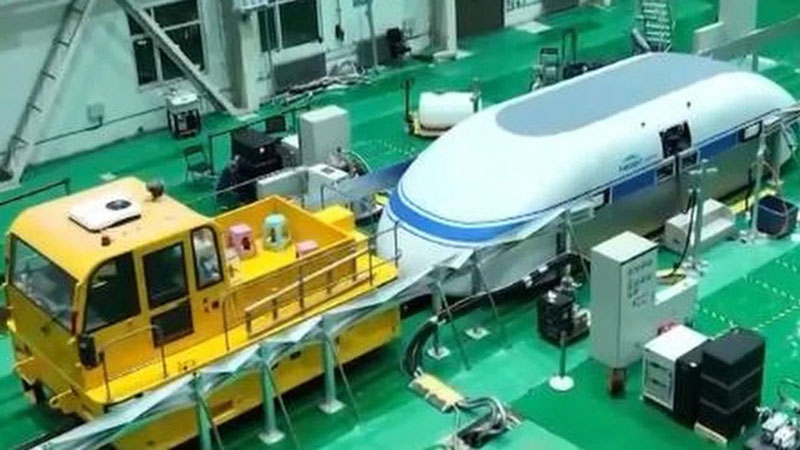A hyperloop prototype, which Elon Musk has been talking about for a long time, has been tested for the first time in China. A maglev train using superconducting magnets has driven through a low-vacuum tunnel for the first time, proving the ability to move, accelerate and brake within specified parameters. The tests were carried out by the China Aerospace Science and Industry Corporation (CASIC) on a 2 km long test bench. In the future, the speed of the train will be 1000 km/h.

Image source: CCTV
In April 2022, the first 2 km test track was built in Shanxi Province in northern China to test new concepts in magnetic levitation transport. Until recently, the developers tested a prototype capsule on the track in a tunnel with normal air pressure. But in order for the train to reach a speed of about 1000 km/h, it will move in a pipe with low atmospheric pressure – under conditions of the so-called low vacuum.
Recently, CASIC specialists for the first time comprehensively tested a prototype of an ultra-high-speed maglev when moving in a vacuum using superconducting magnets in the suspension system – another technology that will ensure efficient and fairly economical acceleration of levitating trains to the highest speeds. According to Xinhua, “The results showed that the train achieved controlled navigation, suspension stability and safe stopping according to the specified curve.”
It should be understood that such platforms have a much broader purpose than transporting passengers in China from one city to another. Superconducting magnets and vacuum tubes are also potential catapults for launching payloads into space cleanly and relatively cheaply, not to mention the significant military potential of such systems. There are also new materials, technologies, control systems and experience that cannot be overestimated.
Today, you can get from Beijing to Shanghai by the highest speed train (329 km/h) in 3 hours 58 minutes. In a low-vacuum tube, a maglev will transport passengers along this route in approximately 1 hour 30 minutes. It is expected that such transport will connect major cities in China.